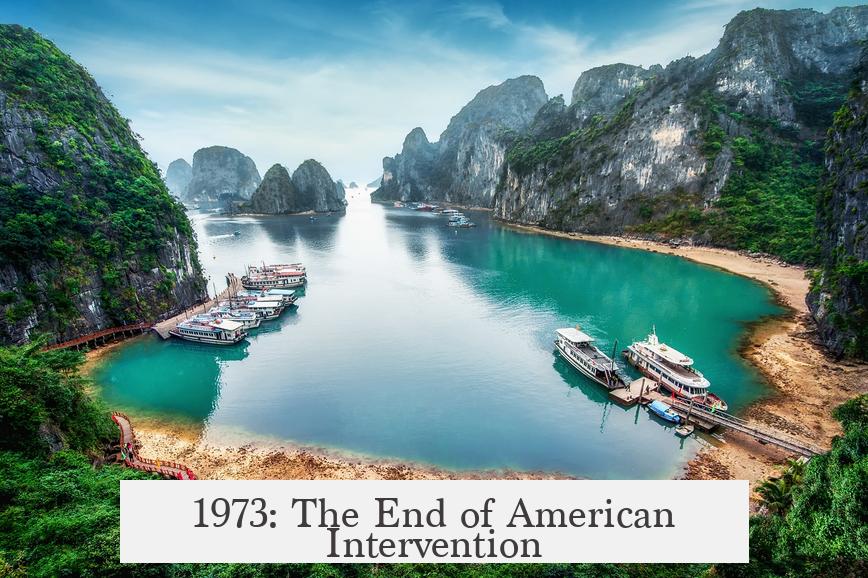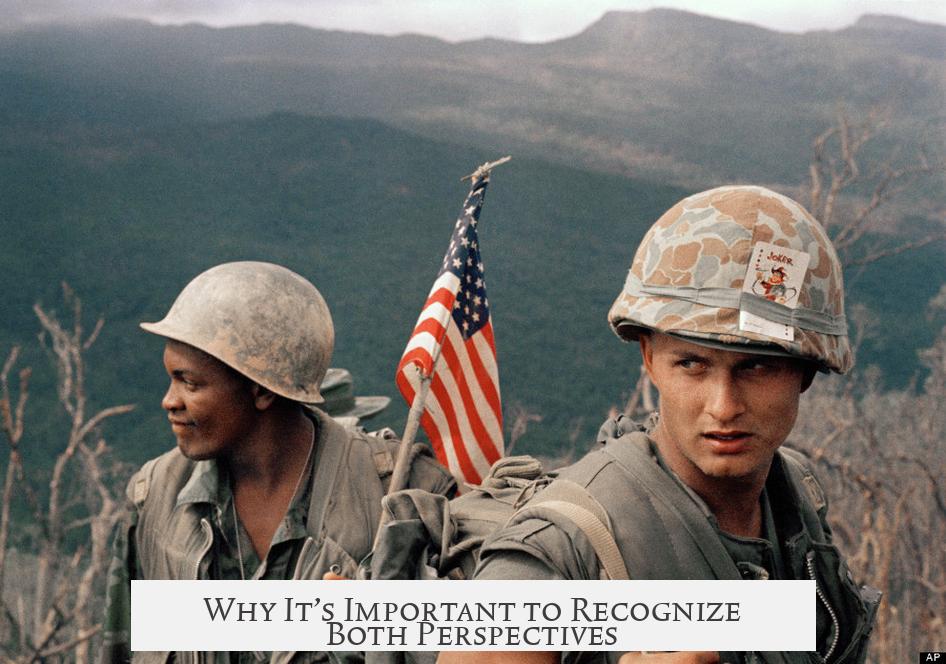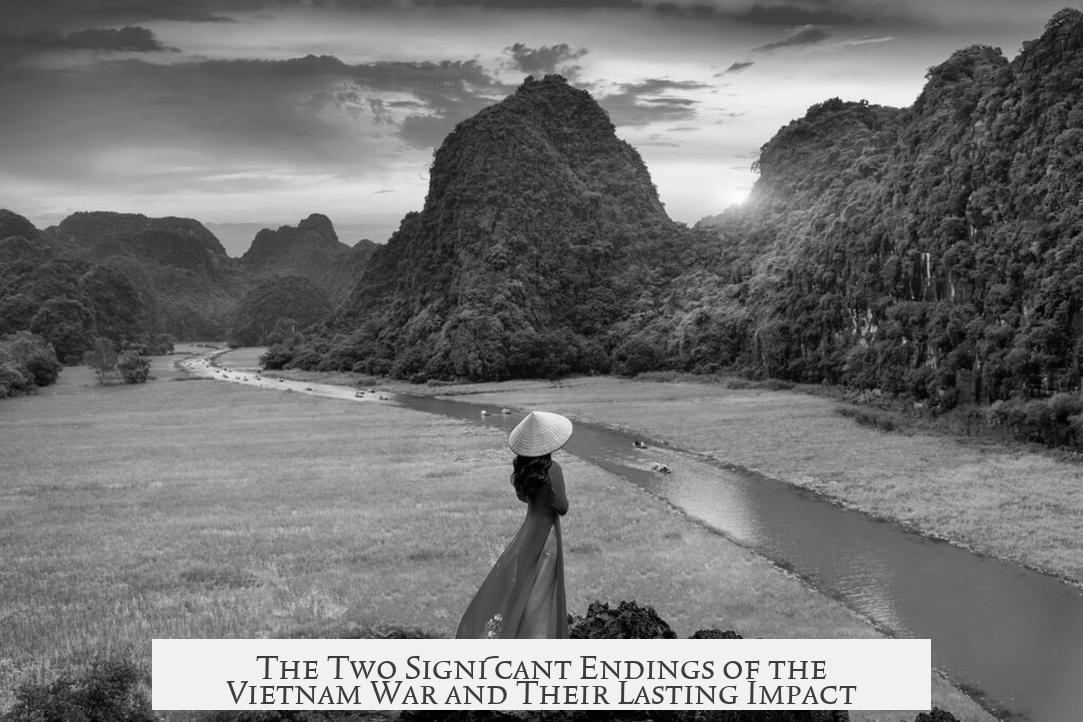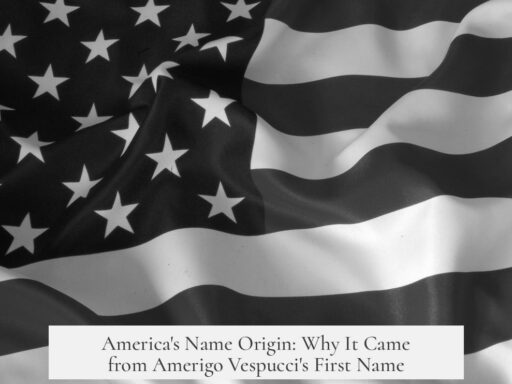The Vietnam War ends with the withdrawal of American forces in 1973, but the conflict continues until 1975 when Saigon falls, marking the collapse of South Vietnam.
The end date of the Vietnam War depends on perspective. The war involves multiple phases and players, making an exact end date hard to pinpoint. Discussions often distinguish between the American intervention and the broader conflict in Vietnam.
The United States enters and escalates the war in the 1960s. By 1973, major peace talks lead to the Paris Peace Accords. The accords call for a ceasefire and the withdrawal of U.S. troops. This withdrawal marks the official end of American combat involvement in Vietnam. From an American viewpoint, this is when the war ends.
However, fighting continues between North and South Vietnamese forces. The war shifts focus to internal Vietnamese struggle after 1973. The North Vietnamese continue their campaign to unify the country under communist rule.
Fighting escalates until April 30, 1975. North Vietnamese troops capture Saigon, the capital of South Vietnam. This event signals the fall of South Vietnam and the end of the war in Vietnam itself. The country reunifies under communist control. Many historians and Vietnamese consider this the true end of the Vietnam War.
- 1973: U.S. troops withdraw following the Paris Peace Accords.
- 1975: Fall of Saigon ends South Vietnam’s government.
The argument about the war’s end highlights how the conflict was seen differently by Americans and Vietnamese. For Americans, the war ends with troop withdrawal and peace talks. For Vietnamese, especially South Vietnamese, the fighting continues until their government falls.
In brief:
- The Vietnam War ends for the U.S. in 1973 with troop withdrawal.
- Vietnamese fighting and conflict persist until 1975.
- The fall of Saigon in 1975 marks the overall end of the conflict.
How Did the Vietnam War End? Unpacking the Two Big Endings

How and when did the Vietnam War end? Well, it depends on who you ask. The story isn’t as simple as a date on the calendar. It’s a tale filled with debates, shifting definitions, and the intertwining of American and Vietnamese timelines.
First, let’s clear the air: there isn’t one universally accepted end date for the Vietnam War. This war’s conclusion is tied to perspectives on what the war really was—whether it’s American intervention, the South Vietnamese struggle, or a broader Vietnamese conflict. The line between where the war ends and history begins is blurry.
Why The War’s End Date Is Debated
People still argue today about when the Vietnam War began and when it ended. Some choose to see it as starting with American involvement. Others look at it as a longer, more extensive conflict with internal roots before and after U.S. intervention.
The debates boil down to “technicalities.” That’s a fancy way to say: it depends on the lens you use. Imagine arguing whether a movie ends at the credits or the final scene. Both answers could be right depending on whose watching.
1973: The End of American Intervention

For many, the Vietnam War literally ends when America stops fighting there. That moment comes in 1973, when the last U.S. troops departed and the Paris Peace Accords came into effect. This agreement tried to bring peace, but it was more like a ceasefire between allies and enemies. A temporary pause, if you will.
“The Vietnam War, in the eyes of many, is the American War. Without American boots on the ground, the war ends,”
Think of it this way: the term “Vietnam War” as widely known in the U.S. relates to America’s military intervention. Once that intervention ended, many say—that’s where the war ended. It’s like turning off the spotlight—you can no longer see the drama unfold.
There are practical benefits to this perspective. It marks a clear point in history for the U.S. government, the soldiers returning home, and American society to move on. It also highlights the heavy costs America paid: over 58,000 dead, countless wounded, and deep social divisions back home.
1975: The Fall of Saigon – A Compelling Second Ending
Then there’s 1975, when Saigon, the capital of South Vietnam, falls to North Vietnamese forces. This event dramatically ends South Vietnam’s government and its hopes for survival as a separate entity.
If you think the Vietnam War is the struggle for Vietnam itself, not just America’s chapter, then 1975 feels like the real finish line. It’s when the conflict’s military and political drama finally culminated in the North’s victory and the country’s reunification under communist rule.
The fall of Saigon was chaotic and symbolic. People scrambled to escape by helicopter from rooftops. Families split apart. It marked an end but also the start of a difficult rebuilding process that Vietnam still carries today.
Why It’s Important to Recognize Both Perspectives

Both 1973 and 1975 serve different purposes. The 1973 end date centers on American withdrawal. The 1975 date highlights Vietnam’s internal struggle coming to a conclusion. When looking back, acknowledging both helps us understand the war’s full impact.
Here’s a thought: what if history, like a good novel, has more than one ending? Each perspective gives valuable insights. The U.S. citizen might look to 1973 as a moment to reflect on intervention’s cost. Meanwhile, the Vietnamese might see 1975 as the real resolution to decades of conflict.
Practical Lessons from How the War Ended
Understanding these dual endings isn’t just academic. It teaches us about perspective in world events and how complex conflicts don’t always end neatly.
- For historians and students: Always question the “end” date in conflicts. Consider who’s telling the story.
- For policymakers: Remember that military withdrawal doesn’t always mean peace.
- For the curious learner: Think about how the same event can mean different things to different people.
Imagine the feeling of a soldier leaving Vietnam in 1973, relieved to head home. Contrast that with a South Vietnamese civilian in 1975, facing life-changing upheaval. Two endings. Two emotional realities.
Wrapping It Up: What’s the Real End?
The truth is, the Vietnam War ended in stages. The U.S. intervention wrapped up in 1973 with American troops leaving. The broader conflict, with Vietnam itself at the center, reached its conclusion two years later in 1975 with Saigon’s fall.
Each end signals a shift but not necessarily a clean break. They reflect how history bends and twists, shaped by those who live it and those who later study it.
So next time you hear “The Vietnam War ended in 1973” or “It ended in 1975,” remember: both are right. And both tell us more about how complex this historic chapter truly is.
How do you see it? Is the war’s end tied to America’s exit or Vietnam’s political fate? The debate continues, inviting us to think deeper about what it really means for a war to end.
When did American involvement in the Vietnam War officially end?
American military intervention ended in 1973. This marked the withdrawal of U.S. troops and the end of active U.S. combat roles.
Why do some people say the Vietnam War ended in 1975?
Many consider the war ended in 1975 when Saigon fell to North Vietnamese forces. This event marked the collapse of South Vietnam’s government.
Is there a universally agreed-upon end date for the Vietnam War?
No, the official end date varies. Some focus on the U.S. withdrawal in 1973, others on Saigon’s fall in 1975. The end depends on perspective.
What role did South Vietnam play in defining the war’s end?
South Vietnam’s collapse in 1975 tied to U.S. involvement. Some argue the war truly ended when South Vietnam was defeated.
Why are the start and end dates of the Vietnam War debated?
The war had many phases, and perspectives differ. The complexity of American involvement and Vietnamese conflict leads to varied interpretations of start and end dates.




